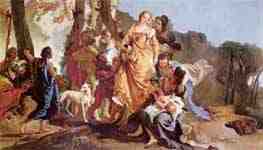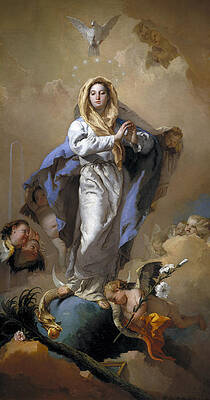Giovanni Battista Tiepolo
Paintings
Saint Thecla Praying For The Plague-stricken

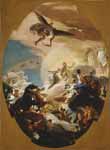
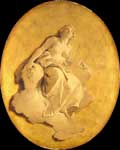
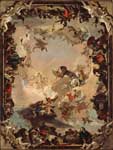
Allegory of the Planets and Continents
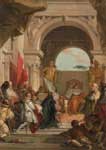
The Investiture of Bishop Harold as Duke of Franconia
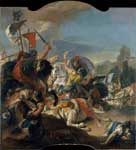
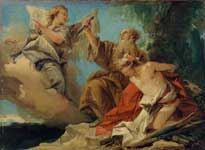
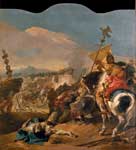
 Vision of St. Clement (A Vision of the Trinity)
Vision of St. Clement (A Vision of the Trinity)

An Allegory with Venus and Time


Rinaldo turning in Shame from the Magic Shield


Seated Man, Woman with Jar, and Boy
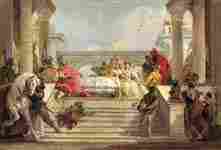

The Virgin and Child appearing to a Group of Saints


Two Orientals seated under a Tree
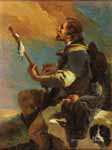
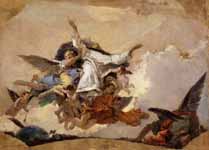
Sketch for The Glory of Saint Dominic
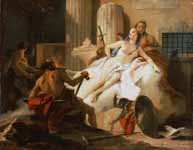
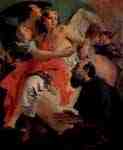
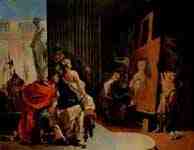
Alexander the Great and Campaspe in Apelles Studio

 Apotheosis of the Pisani Family
Apotheosis of the Pisani Family
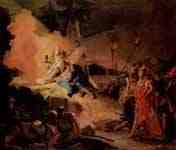 Christ on the Mount of Olives and the angel
Christ on the Mount of Olives and the angel
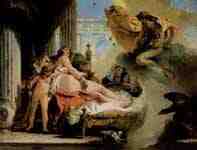
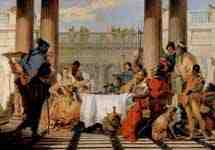
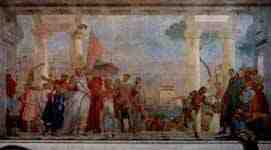 The reception of Henrich III .
The reception of Henrich III .

The Pope Clement I prays to the Holy Trinity

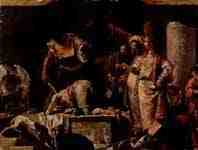
The Beheading of John the Baptist
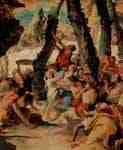

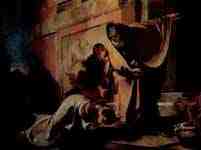
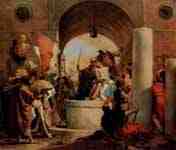

Apparition of the Virgin to St. Philip Neri ago


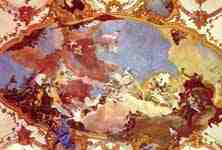
Würzburg: Friedrich Barbarossa and Beatrix of Burgundy
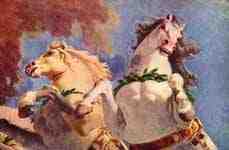
Würzburg : The Sun Horses of Apollo
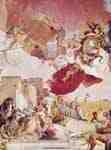
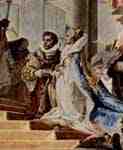
Würzburg : Frescoes in the imperial hall , detail

Würzburg : Frescoes in the imperial hall , detail
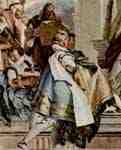
Würzburg : Frescoes in the imperial hall , detail
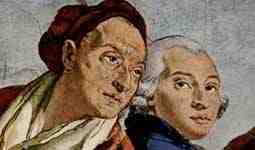
Würzburg : Frescoes in the stairwell , detail
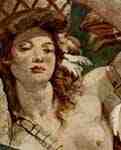
Würzburg : Frescoes in the stairwell , detail
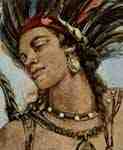
Würzburg : Frescoes in the stairwell , detail
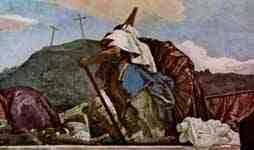
Würzburg : Frescoes in the stairwell , detail
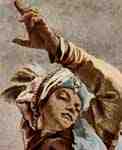
Würzburg : Frescoes in the stairwell , detail
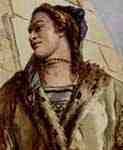
Würzburg : Frescoes in the stairwell , detail
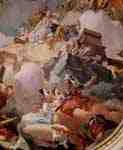
Apotheosis of the Spanish Royal Family
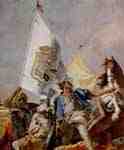

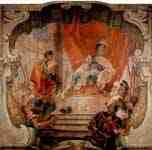

Villa Vallmarana : Aeneas presents Dido , detail
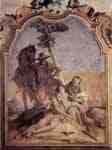
Villa Vallmarana : Angelica, accompanied by a shepherd

Villa Vallmarana : Angelica and Medorus
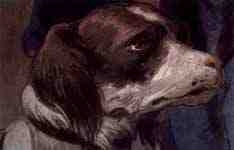
Villa Vallmarana : Greek fleet in Aulius , detail

Villa Vallmarana : Greek fleet in Aulius , detail

Villa Vallmarana : The Sacrifice of Iphigenia
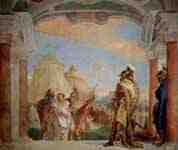
Villa Vallmarana : Agamemnon and Briseiis
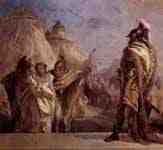
Villa Vallmarana : Agamemnon and Briseiis , detail
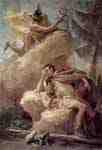
Villa Vallmarana : Mercury appears to Aeneas
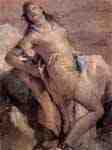
Villa Vallmarana : Minerva and Achilles

Villa Vallmarana : Rinaldo and Ubaldo
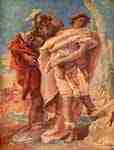
Villa Vallmarana : Rinaldo and the old warrior , detail
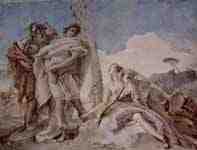
Villa Vallmarana : Rinaldo leaves Armida
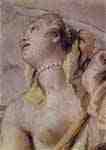
Villa Vallmarana : Rinaldo leaves Armida , detail
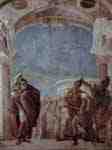
Villa Vallmarana : Ruggero freed Angelica , detail
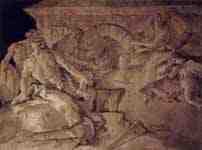
Villa Vallmarana : Venus Asks Vulcan for armor
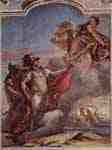
Villa Vallmarana : Venus leaves Aeneas and Acatus

Bishop's Palace in Undine : Solomon's judgment
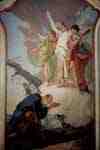
Bishop's Palace in Undine : Abraham and the angels
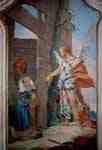
Bishop's Palace in Undine : Sarah and the Angel
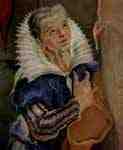
Bishop's Palace in Undine : Sarah and the Angel , detail

Bishop's Palace in Undine : Rachel hides the idols

Bishop's Palace in Undine : Rachel hides the idols , detail
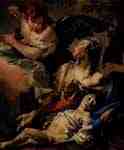
Hagar and Ishmael counterpart to " Abraham and the Angels "

Hannibal sees the head of Hasdrubal

St. Thekla Este freed from the plague
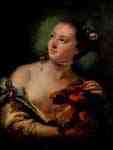
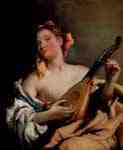
Young female singer with Mandolin
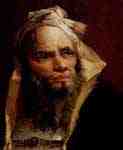
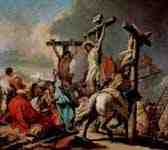
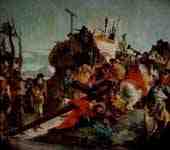
Way of the Cross of Christ to Calvary
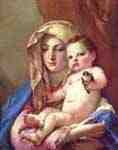


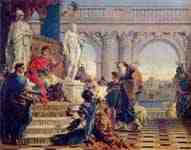
Maecenas Presenting the Liberal Arts to Emperor Augustus

Neptune provides the city of Venice offerings
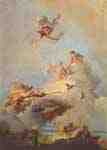
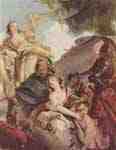
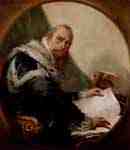
Portrait of Antonio Riccobono , fragment

Portrait of an authorized officer
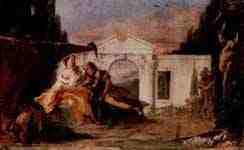
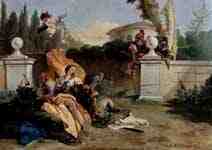
Rinaldo and Armida are surprised
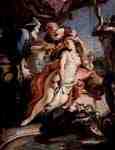


Meeting of Marc Antony and Cleopatra
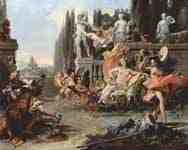
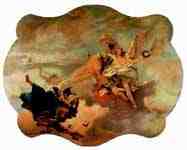
Triumph of Fortitude and the Sapienzia
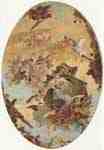
Transportation of the Holy House
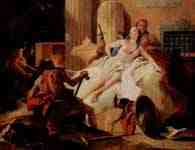
Drawings
Head Of A Young Man In Three-quarter View

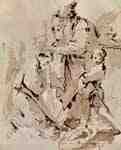
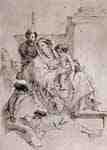
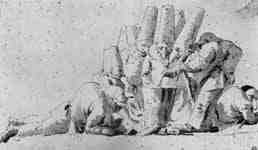


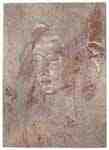
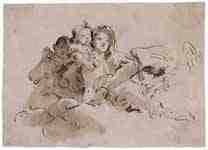
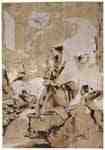
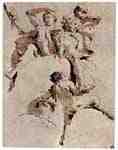
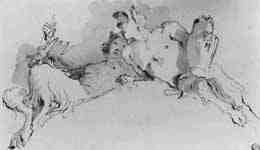
Fine Art Prints | Greeting Cards | Phone Cases | Lifestyle | Face Masks | Men's , Women' Apparel | Home Decor | jigsaw puzzles | Notebooks | Tapestries | ...
Giovanni Battista Tiepolo (Italian pronunciation: [dʒoˈvanni batˈtista ˈtjɛpolo]; March 5, 1696 – March 27, 1770), also known as Gianbattista or Giambattista Tiepolo, was an Italian painter and printmaker from the Republic of Venice. He was prolific, and worked not only in Italy, but also in Germany and Spain.
Successful from the beginning of his career, he has been described by Michael Levey as "the greatest decorative painter of eighteenth-century Europe, as well as its most able craftsman."[1]
Biography
Early life (1696–1726)
Born in Venice, he was the youngest of six children of Domenico and Orsetta Tiepolo.[3] His father was a small shipping merchant[4] who belonged to a family that bore the prestigious patrician name of Tiepolo without claiming any noble descent. Some of the children acquired noble godparents, and Giambattista was originally named after his godfather, a Venetian nobleman called Giovanni Battista Dorià. He was baptised on 16 April 1696 in the local church, San Pietro di Castello (then still officially the cathedral of Venice). His father died about a year later, leaving his mother to bring up a family of young children, presumably in somewhat difficult circumstances.[3]
In 1710 he became a pupil of Gregorio Lazzarini, a successful painter with an eclectic style. He was, though, at least equally strongly influenced by his study of the works of other contemporary artists such as Sebastiano Ricci and Giovanni Battista Piazzetta and those of his Venetian predecessors, especially Tintoretto and Veronese.[5] A biography of his teacher, published in 1732, says that Tiepolo "departed from [Lazzarini's] studied manner of painting, and, all spirit and fire, embraced a quick and resolute style".[5] His earliest known works are depictions of the apostles, painted in spandrels as part of the decoration of the church of the Ospedoletto in Venice in 1715–6.[6] At about the same time he became painter to the Doge, Giovanni II Cornaro, and oversaw the hanging of pictures at his palace, as well as painting many works himself, of which only two portraits have been identified.[7] He painted his first fresco in 1716, on the ceiling of a church at Biadene, near Treviso.[8] He probably left Lazzarini's studio in 1717, the year he was received into the Fraglia or guild of painters.[5]
In around 1719–20 he painted a scheme of frescoes for the wealthy, and recently ennobled, publisher Giambattista Baglione in the hall of his villa at Massanzago near Padua. Tiepolo depicted the Triumph of Aurora on the ceiling, and the Myth of Phaethon on the walls, creating the kind of fluid spatial illusion which was to became a recurring theme in his work.[9]
In 1722 he was one of twelve artists commissioned to contribute a painting on canvas of one of the apostles as part of a decorative scheme for the nave of San Stae in Venice. The other artists involved included Ricci, Piazetta, and Pellegrini.[10]
Marriage and children
In 1719, Tiepolo married Maria Cecilia Guardi, sister of two contemporary Venetian painters Francesco and Giovanni Antonio Guardi. Together, Tiepolo and his wife had nine children. Four daughters and three sons survived childhood. Two of his sons, Domenico and Lorenzo, painted with him as his assistants and later achieved some independent recognition. His children painted figures with a design similar to that of their father, but with distinctive, including genre, styles. His third son became a priest. Fabio Canal, Francesco Lorenzi, Domenico Pasquini were among his pupils.
Early mature work (1726–1750)
Some major commissions came from the patrician Dolfin family. Dioniso Dolfin, the Archbishop of Udine in Friuli employed him to decorate a chapel in the cathedral at Udine, and then to paint another cycle depicting episodes from the lives of Abraham and his descendants from the book of Genesis at his archiepiscopal palace (the "Arcivescovado")[1] (completed 1726–1728). Despite their elevated subject matter, they are bright in colour, and light-hearted in mood: Michael Levey describes the paintings at the palace as "a shimmering set of tableaux, full of wit and elegance. [11] Tiepolo used a much cooler palette than previous Venetian painters, in order to create a convincing effect of daylight.[12] His first masterpieces in Venice were a cycle of ten enormous canvases painted to decorate a large reception room of Ca' Dolfin on the Grand Canal of Venice (ca. 1726–1729), depicting battles and triumphs from the history of ancient Rome.[10]
These early masterpieces, innovative amongst Venetian frescoes for their luminosity, brought him many commissions. He painted canvases for churches such as that of Verolanuova (1735–1740), for the Scuola dei Carmini (1740–1747), and the Chiesa degli Scalzi (1743–1744; now destroyed) in Cannaregio, a ceiling for the Palazzi Archinto and Casati-Dugnani in Milan (1731), the Colleoni Chapel in Bergamo (1732–1733), a ceiling for the Gesuati (Santa Maria del Rosario) in Venice of St. Dominic Instituting the Rosary (1737–1739), Palazzo Clerici, Milan (1740), decorations for Villa Cordellini at Montecchio Maggiore (1743–1744) and for the ballroom of the Palazzo Labia in Venice (now a television studio), showing the Story of Cleopatra (1745–1750).
Etchings
Tiepolo produced two sets of etchings, the Capricci (c.1740–2) and the Scherzi di fantasia (c.1743–57) . The ten capricci were first published by Anton Maria Zanetti, incorporated into the third edition of a compilation of woodcuts after Parmigiano. They were not published separately until 1785. The subject matter is often bizarre and fantastical, and the works owe a lot to the example of Salvator Rosa and Giovanni Benedetto Castiglione.[13] The 23 Scherzi were etched over more than ten years and privately circulated, only being commercially published after Tiepolo's death, with numbers and titles added by his son, Giandomenico. Subjects include mysterious Eastern figures, and, in some of the later prints, scenes of necromancy.[14]
Apotheosis of Spain in Royal Palace of Madrid.
Würzburg Residenz (1750–1753)
By 1750, Tiepolo's reputation was firmly established throughout Europe, with the help of his friend Francesco Algarotti, an art dealer, critic and collector. That year, at the behest of Prince Bishop Karl Philip von Greiffenklau, he traveled to Würzburg where he arrived in November 1750. He remained there for three years during which he executed ceiling paintings in the New Residenz palace (completed 1744). He frescoed the Kaisersaal salon in collaboration with his sons Giandomenico and Lorenzo and was then invited to deliver a design for the grandiose entrance staircase (Treppenhaus) designed by Balthasar Neumann. It is a massive ceiling fresco at 7287 square feet (677 m2), and was completed in November 1753.[15] His Allegory of the Planets and Continents depicts Apollo embarking on his daily course; deities around him symbolize the planets; allegorical figures (on the cornice) represent the four continents. He included several portraits in the Europe section of this fresco, including a self-portrait; one of his son Giandomenico; one of the prince-bishop von Greiffenklau; one of the painter Antonio Bossi; and one of the architect, Balthasar Neumann .[16]
Return to Venice and the Veneto (1753–1770)
Tiepolo returned to Venice in 1753. He was now in demand locally, as well as abroad where he was elected President of the Academy of Padua. He went on to complete theatrical frescoes for churches; the Triumph of Faith for the Chiesa della Pietà; panel frescos for Ca' Rezzonico (which now also houses his ceiling fresco from the Palazzo Barbarigo); and paintings for patrician villas in the Venetian countryside, such as Villa Valmarana in Vicenza and an elaborate panegyric ceiling for the Villa Pisani in Stra.
In some celebrated frescoes at the Palazzo Labia, he depicted two scenes from the life of Cleopatra: Meeting of Anthony and Cleopatra[1] and Banquet of Cleopatra,[2] as well as, in a central ceiling fresco, the Triumph of Bellerophon over Time. Here he collaborated with Girolamo Mengozzi Colonna. This connection with Colonna, who also designed sets for opera, highlights the increasing tendency towards composition as a staged fiction in Tiepolo's frescoes. The architecture of the Banquet fresco also recalls that of Veronese's Wedding at Cana. In 1757, he painted an altar piece for the Thiene family, representing the apotheosis of Saint Cajetan. It is in the church of hamlet of Rampazzo in the Camisano Vicentino.
Madrid
Giovanni Battista Tiepolo - Apollo Pursuing Daphne, 1755-1760
Giovanni Battista Tiepolo - Manna in the desert
In 1761, Charles III commissioned Tiepolo to create a ceiling fresco to decorate the throne room of the Royal Palace of Madrid. The panegyric theme is the Apotheosis of Spain and has allegorical depictions recalling the dominance of Spain in the Americas and across the globe.
He also painted two other ceilings in the palace, and carried out many private commissions in Spain.[17]However he suffered from the jealousy and the bitter opposition of the rising champion of Neoclassicism, Anton Raphael Mengs; at the instigation of Mengs' supporter, the King's confessor Joaquim de Electa, had Tiepolo's series of canvases for the church of S. Pascual at Aranjuez replaced by works by his favourite.[17]
Tiepolo died in Madrid on March 27, 1770.
After his death, the rise of a stern Neoclassicism and the post-revolutionary decline of absolutism led to the slow decline of the style associated with his name, but failed to dent his reputation. In 1772, Tiepolo's son was sufficiently respected to be painter to Doge Giovanni Cornaro, in charge of the decoration of Palazzo Mocenigo in the sestiere of San Polo, Venice.
List of works
Paintings before 1740
| Work | Date | Location | Link |
|---|---|---|---|
| The Martyrdom of St. Bartholomew | 1722 | San Stae, Venice | |
| The Rape of Europa | c. 1725 | Gallerie dell'Accademia, Venice | |
| Allegory of the Power of Eloquence | c. 1725 | Courtauld Institute, Modello for Palazzo Sandi, Venice | |
| Frescoes | 1726 | Episcopal palace, Udine | |
| Perseus & Andromeda | 1730 | Frick Collection | |
| Education of the Virgin | 1732 | Santa Maria della Consolazione (Fava), Venice | |
| Angel rescuing Hagar | 1732 | Scuola di San Rocco, Venice | |
| John the Baptist preaching | 1732–1733 | Cappella Colleoni, Bergamo | |
| Beheading of John the Baptist | 1732–1733 | Cappella Colleoni, Bergamo | |
| Scourge of the Serpents | 1732–1735 | Gallerie dell'Accademia, Venice | |
| Joseph receiving ring from pharaoh | 1732–1735 | Dulwich Picture Gallery | |
| Triumph of Zephyr and Flora | 1734–1735 | Museo del Settecento Veneziano, Ca' Rezzonico, Venice | |
| Jupiter and Danaë | 1736 | Universitet Konsthistoriska Institutionen, Stockholm | |
| The Finding of Moses | 1736–1738 | National Gallery of Scotland, Edinburgh | |
| Pope St. Clement Adoring the Trinity | 1737–1738 | Alte Pinakothek, Munich | |
| Saint Augustin, Saint Louis of France, Saint John the Evangelist and a bishop | 1737–1738 | Palais des Beaux-Arts de Lille | |
| Institution of the Rosary | 1737–1739 | Church of the Gesuati, Venice | |
| Christ Carrying the Cross | 1737–1738 | Sant'Alvise, Venice | |
| The Madonna of Mount Carmel | 1730s | Pinacoteca di Brera, Milan | |
| Virgin with Six Saints | 1737–1740 | Museum of Fine Arts, Budapest | |
| Scipio Africanus Freeing Massiva | between 1719 and 1721 | The Walters Art Museum, Baltimore, USA |
Works from 1740–1750
| Work | Date | Location | Link | |
|---|---|---|---|---|
| Alexander the Great and Campaspe in the Studio of Apelles | 1740 | Getty Center, Los Angeles | ||
| The Virgin Appearing to St. Philip Neri | 1740 | Museo Diocesano, Camerino | ||
| The Gathering of Manna | 1740–1742 | Parrocchiale, Verolanuova | ||
| The Sacrifice of Melchizedek | 1740–1742 | Parrocchial church, Verolanuova | ||
| The Finding of Moses | 1740–1745 | National Gallery of Victoria, Melbourne | [3] | |
| Rinaldo Enchanted by Armida | 1742 | Art Institute of Chicago | ||
| Rinaldo and Armida in Her Garden | 1742 | Art Institute of Chicago | ||
| Armida Abandoned by Rinaldo | 1742 | Art Institute of Chicago | ||
| Rinaldo and the Magus of Ascalon | 1742 | Art Institute of Chicago | ||
| The Triumph of Virtue and Nobility over Ignorance | 1743 | Norton Simon Museum, (Pasadena, CA) | ||
| Empire of Flora | 1743 | The Legion of Honor, (San Francisco, CA) | ||
| Time Unveiling Truth | c. 1743 | Museo Civico Palazzo Chiericati, Vicenza | ||
| The Banquet of Cleopatra | 1743–1744 | National Gallery of Victoria, Melbourne | [4] | |
| Worshippers | 1743–1745 | Gallerie dell'Accademia, Venice | ||
| Apollo and Daphne | 1755–1760 | National Gallery of Art, Washington DC | [5] | |
| Discovery of the True Cross | c. 1745 | Gallerie dell'Accademia, Venice | ||
| Time Unveiling Truth | c. 1745–1750 | Museum of Fine Arts, Boston | ||
| Frescoes of the story of Cleopatra | 1746 | Palazzo Labia, Venice | ||
| The Virgin with 3 female Dominican Saints | 1739–1748 | Church of the Gesuati, Venice | ||
| Last Communion of St. Lucy | 1747–1748 | Santi Apostoli, Venice | ||
| The Banquet of Cleopatra and Antony | 1747–1750 | North Carolina Museum of Art, Raleigh, North Carolina, USA | ||
| The Glorification of the Barbaro Family | 1749–1750 | Metropolitan Museum of Art, New York, USA | ||
| St. James the Greater Conquering the Moors | 1749–1750 | Museum of Fine Arts, Budapest, Hungary |
Works after 1750
| Work | Date | Location | Link |
|---|---|---|---|
| Frescoes | 1751–1753 | Residenz, Würzburg | [6] [7] |
| Collecting Manna | c. 1751 | National Museum of Serbia, Belgrade | |
| Allegory of Planets and Continents | 1752 | Metropolitan Museum of Art, New York | [8] |
| The Death of Hyacinth | 1752–1753 | Thyssen-Bornemisza Collection, Madrid | |
| Adoration of the Magi | 1753 | Alte Pinakothek, Munich | |
| Coronation of the Virgin | 1754 | Kimbell Art Museum, Dallas (modelo for Ospedale della Pietà) | |
| An Allegory with Venus and Time | 1754–1758 | National Gallery, London, England | |
| Frescoes from Roman mythology | 1757 | Villa Valmarana, Vicenza | |
| A Seated Man and a Girl with a Pitcher | c. 1755 | National Gallery, London | |
| The Theological Virtues | c. 1755 | Musées Royaux des Beaux-Arts, Brussels | |
| The Martyrdom of St. Agatha | c. 1756 | Staatliche Museen, Berlin, Germany | |
| Allegory of Merit Accompanied by Nobility and Virtue | 1757–1758 | Museo del Settecento Veneziano, Ca' Rezzonico, Venice | |
| The Vision of St. Anne | 1759 | Gemäldegalerie, Dresden | |
| Virtue and Nobility Crowning Love | 1759-1761 | Museum of Fine Arts | |
| Modello for the Apotheosis of the Pisani Family | 1760 | Musée des Beaux-Arts d'Angers | |
| Madonna of the Goldfinch | c. 1760 | National Gallery of Art, Washington | |
| Woman with a Parrot | 1760–1761 | Ashmolean Museum, Oxford | |
| Apotheosis of the Pisani Family | 1761–1762 | Villa Pisani, Stra | |
| San Carlo Borromeo | 1767–1769 | Cincinnati Art Museum | |
| The Immaculate Conception | 1767–1769 | Museo del Prado, Madrid | |
| Glory of Spain | 1762–1766 | Throne Room of Royal Palace of Madrid | |
| The Apotheosis of the Spanish Monarchy | 1762–1766 | Queen's Antechamber, Palacio Real, Madrid | |
| Venus and Vulcan | 1762–1766 | Halberdiers' Room, Palacio Real, Madrid | |
| The Entombment of Christ | 1769–1770 | National Museum of Ancient Art, Lisbon | [9] |
| The Flight to Egypt | 1765–1770 | National Museum of Ancient Art, Lisbon | [10] |
References
Levey 1980, p. 193.
"Scipio Africanus Freeing Massiva".
Barcham, William L. "Tiepolo". Grove Art Online. Oxford Art Online, Oxford University Press. Retrieved 3 May 2014. (subscription required)
"Tièpolo, Giambattista". Treccani (in Italian). Treccani. Retrieved 3 May 2014.
Giambattista Tiepolo 1698–1770 1996, p. 37.
Giambattista Tiepolo 1698–1770 1996, p. 37–8.
Giambattista Tiepolo 1698–1770 1996, p. 57.
Giambattista Tiepolo 1698–1770 1996, p. 39.
Giambattista Tiepolo 1698–1770 1996, p. 40–1.
Giambattista Tiepolo 1698–1770 1996, p. 41.
Levey 1980, p. 198–9.
Wittkower 1973, p. 490.
Giambattista Tiepolo 1698–1770 1996, pp. 349– 50.
Giambattista Tiepolo 1698–1770 1996, pp. 358– 9.
Levey 1980, pp. 225–230.
"Residenz staircase". Wurzburg Residenz.
Wittkower 1973, p. 486.
Sources
Giambattista Tiepolo, 1696-1770 Giambattista Tiepolo 1698–1770 (Exhibition catalogue). New York: Metropolitan Museum of Art. 1996. ISBN 9780870998119.
Levey, Michael (1980). Painting in Eighteenth-Century Venice (revised ed.). Cornell University Press. pp. 225–230.
Wittkower, Rudolf (1993). Art and Architecture in Italy.
Further reading
Barcham, William L. (1992). Giambattista Tiepolo. Thames and Hudson. ISBN 0-500-08054-2.
Rizzi, Aldo (1971). The etchings of the Tiepolos. Electa. ISBN 0-7148-1499-7.
Aldo Rizzi, Il Tiepolo all'Arcivescovado di Udine, Milano 1965.
Aldo Rizzi, Tiepolo a Udine, Milano 1969.
Aldo Rizzi, le acqueforti dei Tiepolo, Milano, 1970.
Aldo Rizzi, La grafica del Tiepolo: le acqueforti, Milano 1971.
Aldo Rizzi, La mostra del Tiepolo, Milano 1971.
Aldo Rizzi, Giambattista Tiepolo, Milano 1990.
Aldo Rizzi, I Tiepolo a Udine, Milano 1996.
Adelheid M. Gealt and George Knox, Domenico Tiepolo: A New Testament, Bloomington, IN, Indiana UP, 2006.
Christiansen, Keith. Giambattista Tiepolo, 1696-1770, New York: Metropolitan Museum of Art, 1996. ISBN 9780870998119
----
Fine Art Prints | Greeting Cards | Phone Cases | Lifestyle | Face Masks | Men's , Women' Apparel | Home Decor | jigsaw puzzles | Notebooks | Tapestries | ...
----
Artist
A - B - C - D - E - F - G - H - I - J - K - L - M -
N - O - P - Q - R - S - T - U - V - W - X - Y - Z
Retrieved from "http://en.wikipedia.org/"
All text is available under the terms of the GNU Free Documentation License






